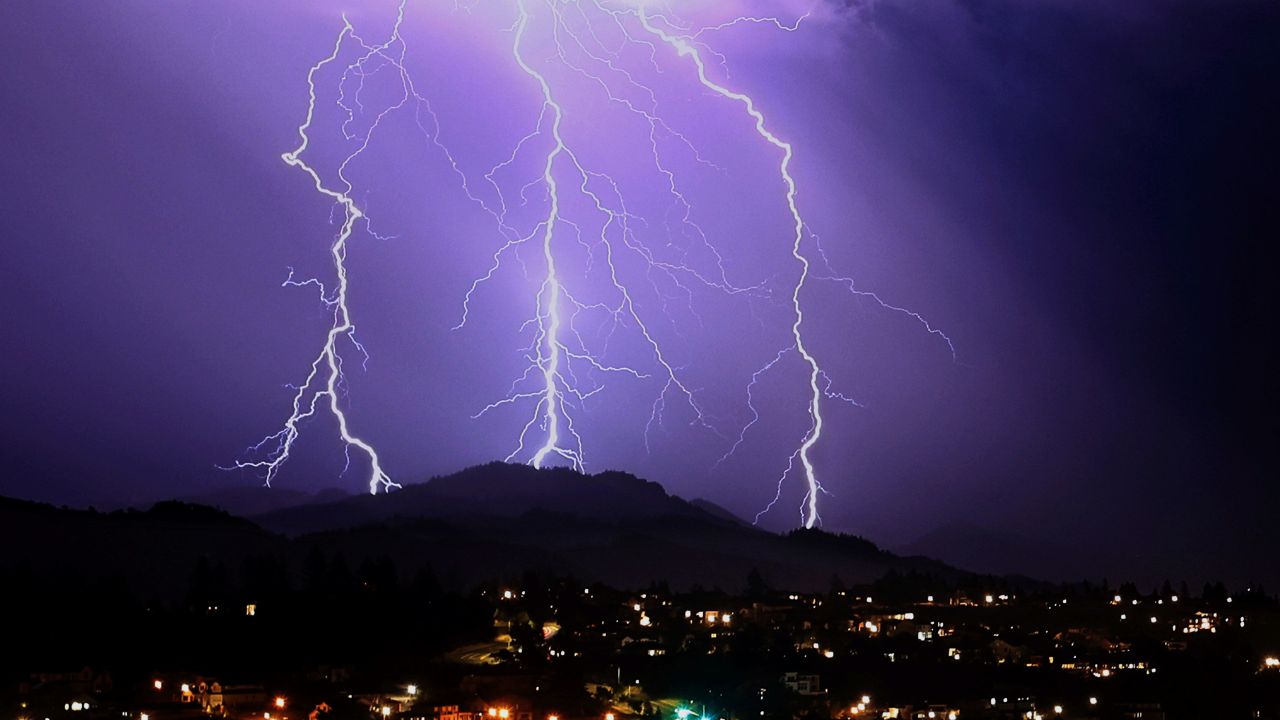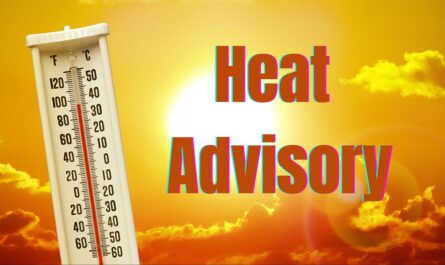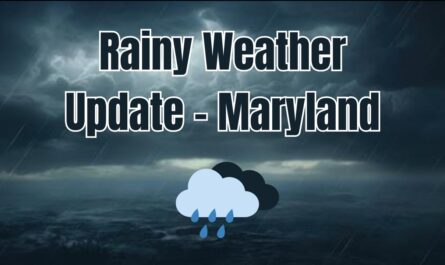San Diego, California – California faced a significant surge in wildfire risk early September 2 after late-summer dry thunderstorms swept across the state, striking thousands of times and igniting multiple fires. High temperatures, low humidity, and dry vegetation combined with lightning to create dangerous conditions for firefighters and residents alike.
Lightning Storms Sweep Through the State
The National Weather Service (NWS) reported that between midnight and 5:30 a.m. local time, nearly 4,800 lightning strikes were recorded across California, including both in-cloud and cloud-to-ground lightning. Most of the strikes were concentrated between the inland East Bay and the Central Valley, where dry fuels made the region especially vulnerable.
In southeast Monterey County and southwest Fresno County, the NWS observed multiple fires igniting within a single hour as lightning struck dry vegetation. Winds in the area remained light, but the dryness of the fuels contributed to the fires’ rapid spread.
The NWS confirmed that much of the rainfall from the storms was minimal, measuring less than 0.10 inches in most areas, making these events classic “dry thunderstorms”, which are notorious for sparking fires.
Wildfire Outbreaks Across Central and Southern California
The California Department of Forestry and Fire Protection (Cal Fire) reported more than a dozen new fires ignited by the lightning storms as of early September 2. While investigations continue to determine the exact causes, lightning-induced ignition is considered the primary factor.
Climate scientist Daniel Swain of UCLA described the situation as a “significant and rapidly unfolding” lightning-induced wildfire outbreak, mainly affecting the Sierra Nevada Foothills. By noon on Sept. 2, dozens of new lightning ignitions had already been reported, with new fires continuing to emerge at frequent intervals.
In Sacramento County, firefighters with the Sacramento Metropolitan Fire District responded to five wildfires after more than 60 lightning strikes hit east of Sloughhouse, according to Captain Mark Nunez. The district reported that the lightning had directly contributed to the ignition of these blazes.
Heat Wave Amplifies Fire Risk
The dry thunderstorms coincided with a lingering heat wave in Southern California and scorching temperatures elsewhere in the state. While heat advisories for inland San Luis Obispo County to San Diego County expired by 6 p.m. Sept. 2, warnings remained in effect for parts of Ventura and Orange Counties through Sept. 3.
The combination of high temperatures, low humidity, and dry winds creates ideal conditions for fires to start and spread quickly. Officials caution that even minimal rainfall from thunderstorms may not reduce the heightened fire risk.
Severe Weather and Red Flag Warnings
The NWS issued severe thunderstorm warnings for portions of the Central Valley and Southern California, while red flag warnings were issued in parts of Northern California near the Oregon border due to “abundant lightning on dry fuels.”
Read Also: Southern California Woman Loses Home in AI Deepfake Romance Scam
Forecasters warned that scattered thunderstorms may produce little to no rain, and lightning strikes outside precipitation cores are likely, which could spark additional fires across the state. Residents were urged to remain alert, avoid outdoor burning, and be prepared for potential evacuations.
Safety Measures for Residents
Cal Fire and local authorities advise residents in wildfire-prone areas to:
- Monitor local fire updates and NWS alerts frequently.
- Prepare emergency kits including water, food, and essential documents.
- Clear vegetation and debris from around homes to reduce fire fuel.
- Follow evacuation orders immediately if authorities issue warnings.
The combination of dry thunderstorms and lingering heat underscores the importance of preparedness during California’s late-summer weather events. Experts stress that lightning strikes, even without heavy rain, are a significant wildfire threat.
Looking Ahead
As of September 2, the situation remains dynamic, with new fires being reported across Central and Southern California. Additional lightning activity is forecast for later in the day, keeping fire officials and residents on high alert.
California’s dry summer conditions, combined with the monsoon-driven storms, highlight the state’s ongoing vulnerability to wildfires triggered by natural causes. Officials continue to monitor the situation closely and urge all residents to exercise caution.
Are you prepared for wildfire season in California? Share your tips and experiences in the comments at ibwhsmag.com.


 by
by 

